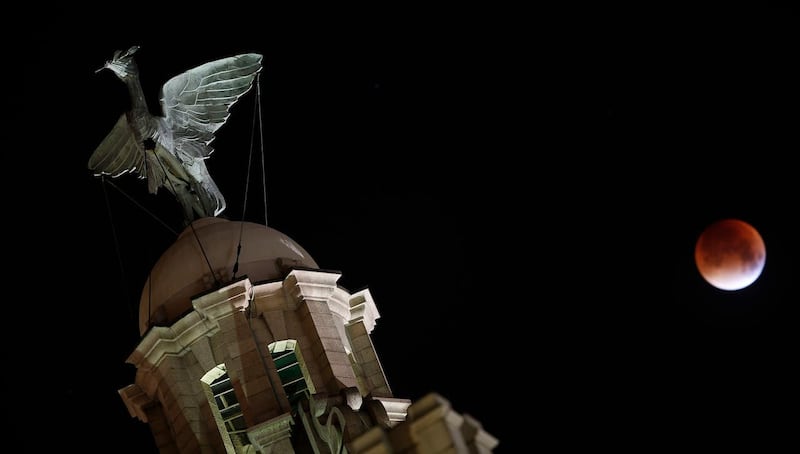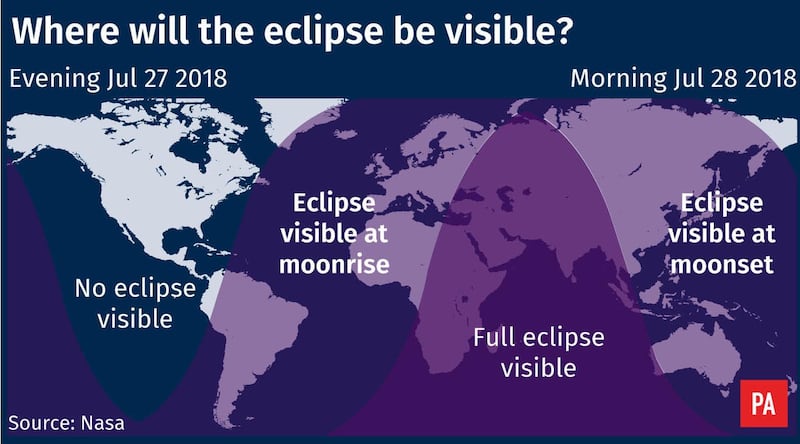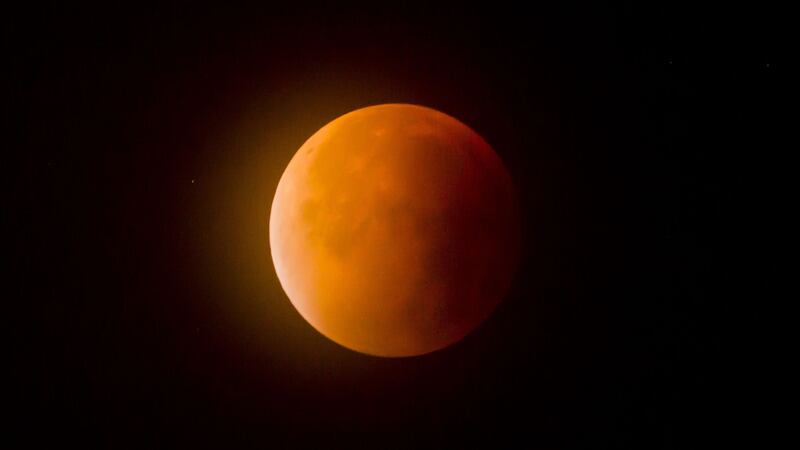A rare total lunar eclipse – expected to be the longest in the 21st century – is set to take place on Friday that will see the Earth’s natural satellite turn blood red.
The celestial event, where the moon will line up with the Earth and the sun, will be seen across the UK and other parts of the Eastern hemisphere.
Here are some of the most googled questions about the lunar eclipse answered.
What is blood moon?

During the eclipse, the moon is expected to take on a red sheen, with the phenomenon being described as the “blood moon”.
It will pass into the shadow of the Earth, blocking the light from the sun and the atmosphere of the Earth will bend the light of the sun onto the moon.
Because blue and violet wavelengths are scattered more than red and orange ones, more of the red wavelengths reach the moon, making the moon appear red.
When was the last blood moon?
The last blood moon was observed on January 31 2018.
It was also a supermoon – meaning the Earth’s natural satellite appeared 14% bigger and 30% brighter in the sky as it reached its closest point to our planet.
Will the blood moon be visible in the UK?

For those lucky enough to have clear skies, moonrise will be at 8.49pm in London, 9.46pm in Glasgow, 9.02pm in Cardiff and 9.27pm in Belfast, with mid-eclipse occurring at 9.21pm and the “total” phase ending at around 10.13pm.
After that, the shadow of the Earth will slowly retreat across the lunar surface until the partial eclipse comes to completion at 11.19pm.
How to photograph a blood moon?
For those looking to capture the astronomical event, preparation is key. Apps such as The Photographer’s Ephemeris and PhotoPills give detailed information on things such as moonrise times and the position of the moon in the sky based on geographical location.
Taking steps such as using a tripod to minimise vibrations and integrating the moon with the surroundings to give a sense of scale and place can lead to great photos.
How often does a blood moon occur?

Whether a full moon turns coppery red depends entirely on the atmospheric conditions and how much dust is in the air to bounce off the light from the sun.
Not all the lunar eclipses will lead to a “bloody” show. Generally, there are three lunar eclipses occurring in any given location per year, though some years there can be none.
The next total lunar eclipse will occur on January 19 2019.
What is the blood moon prophecy?
As with most eclipses, conspiracy theorists believe it is a sign of the end times and is referred to as the Blood Moon prophecy.
The term “blood moon” was popularised by Christian pastor John Hagee in 2013 following the release of the book Four Blood Moons, which highlighted a lunar sequence of four total eclipses that occurred in 2014/15.
Where can you see the blood moon in July 2018?

The Met Office has warned there is a potential for showers to develop across the eastern half of the UK so the best places to observe the celestial event will be towards the western parts of the country.
Also, those in the UK will miss a section of the eclipse due to the moon being below our horizon when it starts, which gives south-eastern observers a slightly better advantage than the north-western ones.








